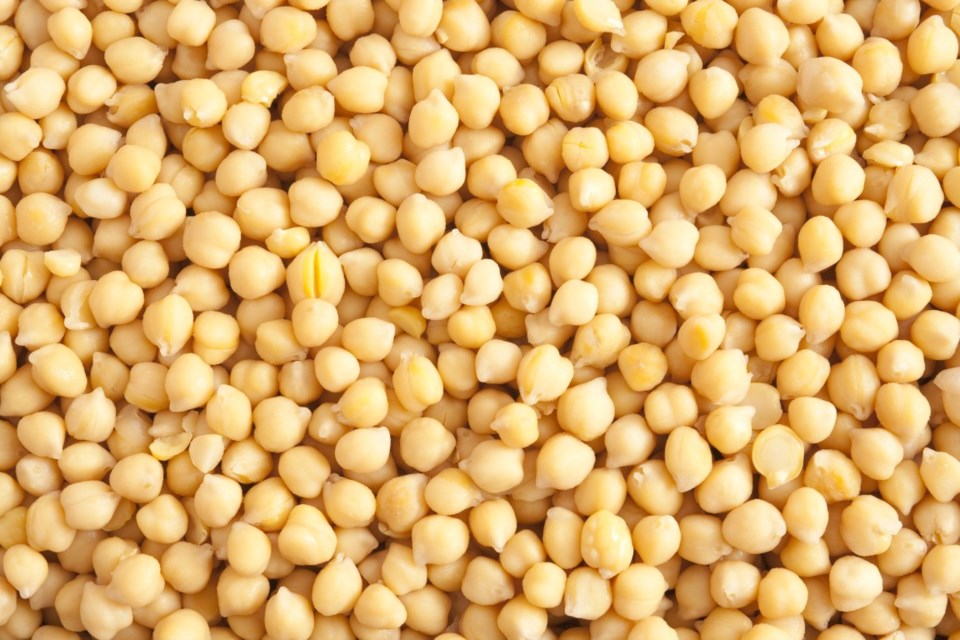Since the start of the pandemic, we have heard about shortages countless times. Most sections of the grocery store have been hit by tightening supplies for one reason or another. But the latest headlines we are seeing are about chickpeas.
Many analysts are expecting chickpea inventories to drop significantly in months to come. For westerners, chickpeas are primarily associated with hummus, an increasingly popular source of fibre for curious consumers wanting to experiment with new ingredients and dishes. But a looming chickpea shortage is likely on the way.
According to Reuters, chickpea crop yields are expected to drop as much as 20 per cent this year due to inclement weather in many parts of the world. India is the largest producer of chickpeas globally, followed by Turkey and, of course, Russia. Canada is number nine in the world, and most of our production is for export markets. Canada’s seeded areas for chickpeas dropped this year, going from 185,500 acres last year to 177,800 this year.
Prices for other commodities were more interesting for farmers. The same happened in the U.S. Russia and Ukraine are usually top exporters of chickpeas, but not this year. While Ukraine is short at least 50,000 tons of chickpeas this year, which would normally end up in the European market, Russia is impacted by trade sanctions resulting from its invasion of Ukraine.
Chickpeas are a cheap and efficient source of plant protein. Not everyone eats them, but consumers do love them. In North America, chickpea prices have already increased 12 per cent from last year, according to NielsenIQ.
Chickpeas are generally used in hummus. Chickpeas might also be popped and eaten like popcorn or ground into flour and used in many vegetable protein-based products we find at the grocery store. Chickpeas are also commonly used in soups, stews, and chilis.
Chickpeas are nutritional powerhouses for consumers who don’t necessarily opt for animal proteins regularly or can’t afford them. Chickpeas are naturally low in sodium and sugar and are cholesterol free. And for people living with celiac disease and who need gluten-free products, chickpeas are a godsend.
Last week though, the world received some good news. Well, sort of. Ukraine and Russia finally signed a deal in Turkey committing to let tons of vital grain supplies ship out from long-blockaded southern ports in Ukraine. Some of the grains stuck at ports are wheat, barley, and, of course, chickpeas.
But the port of Odesa was bombed just 24 hours after the deal was announced.
Russia’s track record in easing commodity pressures is not reassuring. There is still hope, but it’s a bit of a wait-and-see scenario. If executed, a food security crisis won’t be averted in parts of the world, including North-East Africa and the Middle East, but it will lessen the blow in many regions.
For the West, commodity prices have been dropping steadily since May. Wheat prices have fallen from a record $13.38 on May 17 to under $8 a bushel. Corn, canola, sunflower oil, rice, and soybeans are all much cheaper than just a few weeks ago. The Ukraine-Russia grain deal is helping, but prices would still be lower regardless. Procuring ingredients for food manufacturers is getting less expensive by the day, which helps our food inflation situation.
In other words, looming deficits are baked into commodity prices already, and buyers have bought what they need for the fall, albeit at a premium. But they at least have some ingredients for their customers. The commodity supercycle appears to be over, thank goodness. Market conditions are much more predictable, which helps companies plan and anticipate demand. This will likely benefit us all as consumers.
As our agricultural production in North America and Europe concludes in the coming weeks, we should expect to see more reports of grain shortages. So, we need to brace ourselves. Previous reports have already targeted mustard and sunflower seeds. Chickpeas are just the latest one.
North America won’t be short of anything as it can buy itself out of a food security pickle. But other poorer regions won’t have as much luck. We are starting to see signs of civil unrest in many regions of the world. While our food inflation situation is calming down here at home, the worst is yet to come for many other parts of the globe.
Dr. Sylvain Charlebois is senior director of the agri-food analytics lab and a professor in food distribution and policy at Dalhousie University.
©



